Natural Draft Cooling Tower
Natural draft cooling towers are a type of cooling tower that uses the natural convection of air to cool water. They feature a large, hyperbolic structure that promotes airflow without the need for mechanical fans. Warm water from industrial processes or power plants is sprayed over fill material inside the tower, increasing its surface area and promoting heat exchange with the air. As the warm air rises naturally through the tower, cooler air is drawn in from the bottom, facilitating the cooling process. Natural draft cooling towers are highly efficient and reliable, with lower operational costs and less mechanical maintenance compared to forced-draft cooling systems. However, they require significant space and are generally more suited to large-scale operations.

Natural Draft Cooling Tower
Application
Power Generation
- Thermal Power Plants:
Description: Natural draft cooling towers play a crucial role in thermal power plants where steam turbines generate electricity.
Function: They cool the condenser water by transferring heat to the atmosphere, ensuring efficient operation of the power plant.
Benefit: Enhances thermal efficiency and reduces water consumption compared to once-through cooling systems.
- Nuclear Power Plants:
Description: Essential for cooling reactor systems and maintaining safe operating temperatures.
Function: Natural draft towers dissipate heat from the secondary cooling loop, ensuring the stable operation of nuclear reactors.
Benefit: Ensures safety and reliability in nuclear power generation.
- Petrochemical Refineries:
Description: Used in cooling processes for various refining operations, including cooling water used in heat exchangers.
Function: Helps maintain optimal temperatures for chemical reactions and equipment operation.
Benefit: Improves efficiency and reduces operational costs by effectively dissipating heat.
- Steel Mills:
Description: Essential for cooling water in various stages of steel production, such as quenching and cooling of furnace gases.
Function: Natural draft towers aid in maintaining precise temperatures critical for steel quality and production efficiency.
Benefit: Enhances product quality and reduces energy consumption.
Industrial Manufacturing
Natural Draft Cooling Tower
Specification Details
| Model | Cooling Capacity | Air Flow | Cooling Type | Power Consumption | Dimensions (LxWxH) | Weight | Noise Level |
|---|---|---|---|---|---|---|---|
| Model A | 1000 kW | 500,000 m³/h | Evaporative | 0 kW (natural draft) | 10m x 10m x 50m | 200 tons | 65 dB |
| Model B | 1500 kW | 750,000 m³/h | Evaporative | 0 kW (natural draft) | 12m x 12m x 60m | 300 tons | 70 dB |
| Model C | 2000 kW | 1,000,000 m³/h | Evaporative | 0 kW (natural draft) | 14m x 14m x 70m | 400 tons | 75 dB |
| Model D | 2500 kW | 1,250,000 m³/h | Evaporative | 0 kW (natural draft) | 16m x 16m x 80m | 500 tons | 80 dB |
| Model E | 3000 kW | 1,500,000 m³/h | Evaporative | 0 kW (natural draft) | 18m x 18m x 90m | 600 tons | 85 dB |
Natural Draft Cooling Tower
Operation and Efficiency Considerations
Airflow Dynamics: The hyperbolic shape and height of natural draft cooling towers create a natural draft, where warm air rises and draws cool air through the tower. This enhances heat transfer efficiency.
Water Distribution: Proper design and maintenance of the distribution system ensures even distribution of water over the fill media, optimizing heat exchange.
Materials and Durability: The choice of materials for the shell, fill media, and other components impacts durability, resistance to corrosion, and maintenance requirements.
Environmental Impact: Natural draft cooling towers typically have lower energy consumption compared to mechanical draft towers, reducing operational costs and environmental footprint.
Natural Draft Cooling Tower
Design of
- Hyperbolic Shape:
Description: Natural draft cooling towers are characterized by their tall, hyperbolic (or hyperboloid) shape.
Function: This shape facilitates the upward movement of warm, moist air due to the chimney effect, where the buoyancy of warm air causes it to rise naturally.
Benefit: Enhances airflow through the tower without the need for mechanical fans, improving cooling efficiency and reducing energy consumption.
- Height and diameter:
Description: Natural draft cooling towers are typically very tall structures, ranging from tens to over a hundred meters in height.
Function: The height promotes a strong stack effect, allowing air to rise freely through the tower.
Benefit: Maximizes the cooling capacity by optimizing the natural convection process.
- Shell and Structure:
Description: The outer shell of natural draft cooling towers is constructed from materials like reinforced concrete or steel.
Function: Provides structural integrity to support the tower’s height and withstand environmental stresses, such as wind loads.
Benefit: Ensures the long-term durability and reliability of the cooling tower.
Natural Draft Cooling Tower
Components of
- Fill Media:
Description: Located inside the tower, fill media consists of materials such as PVC (Polyvinyl Chloride) or wood.
Function: It increases the contact surface area between water and air, enhancing heat transfer efficiency.
Benefit: Improves cooling effectiveness by promoting effective heat exchange between the circulating water and ambient air.
- Distribution System:
Description: Distributes the hot water or process fluid evenly over the fill media.
Function: Ensures uniform distribution for efficient cooling and prevents channeling or bypassing of water.
Benefit: Maximizes the utilization of fill media and enhances overall cooling performance.
- Drift Eliminators:
Description: Located near the top of the tower, drift eliminators capture water droplets entrained in the exiting air stream.
Function: Minimizes water loss by reducing drift, ensuring efficient water conservation.
Benefit: It helps comply with environmental regulations and improves the tower’s water efficiency.
Other Cooling Towers We Manufacturer
Square Type Cooling Tower
Square Type Cooling Tower functions on the principle of induced draft counter flow operation. The fan generates vertical air movement that flows upwards on the tower and across the fills, opposing the water flow.
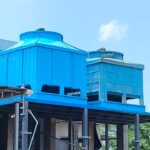
Round Type Cooling Tower
The Round Type Cooling Tower, constructed from FRP, boasts resistance to corrosion, resilience against extreme vibrations, and the ability to withstand high wind loads. Its design emphasizes efficiency
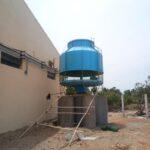
Wooden Cooling Tower
Wooden Cooling Tower are designed to handle water with high levels of dissolved solids (TDS). Hot water from the source is sprayed over special nozzles in a collection basin
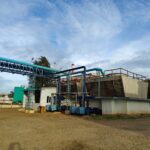
Closed Circuit Cooling Tower
Closed Circuit Cooling Tower is a type of heat exchanger that combines the functions of a cooling tower and a heat exchanger in a single unit.

Cross Flow Cooling Tower
Cross flow cooling towers is a cooling system where air flows horizontally through the tower while water flows vertically downward.
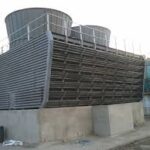
Dry Cooling Tower
Dry Cooling Towers is a type of cooling system used in industrial and power generation processes to remove excess heat
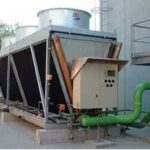
Evaporative Cooling Tower
Evaporative cooling tower are devices used to remove excess heat from industrial processes, power plants, and HVAC systems by using the principle of water evaporation.

Cooling Towers We Exported to
Cooling Towers We Export to Sarawak
Cooling Towers We Export to Selangor
Cooling Towers We Export to Sharjah
Cooling Towers We Export to Southern Province
Cooling Towers We Export to Terengganu
Cooling Towers We Export to UAE
Cooling Towers We Export to UVA Province
Cooling Towers We Export to Western Province
Heat Exchangers We Exported to
Heat Exchangers We Export to Guerrero
Heat Exchangers We Export to Guizhou
Heat Exchangers We Export to Gunma
Heat Exchangers We Export to Hainan
Heat Exchangers We Export to Hebei
Heat Exchangers We Export to Heilongjiang
Heat Exchangers We Export to Henan
Heat Exchangers We Export to Hidalgo
Industrial Chiller We Exported to
Industrial Chiller We Export to Sarawak
Industrial Chiller We Export to Selangor
Industrial Chiller We Export to Serbia
Industrial Chiller We Export to Sharjah
Industrial Chiller We Export to Slovakia
Industrial Chiller We Export to Slovenia
Industrial Chiller We Export to Spain
Industrial Chiller We Export to Sweden
